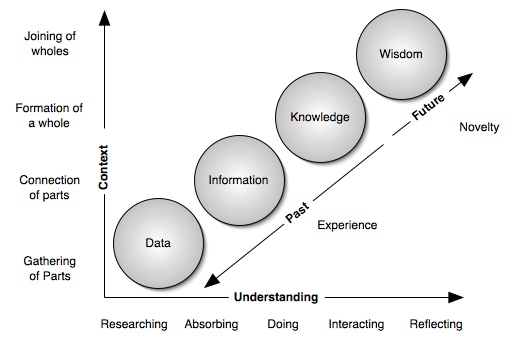(Bloomberg, by Victoria Slind-Flor - Aug 19, 2014)
BlackBerry Ltd. (BBRY) the maker of the BlackBerry mobile devices, has established a separate unit to hold technology assets including its 44,000-patent portfolio, the Waterloo, Ontario-based company said in a regulatory filing.
The unit, to be known as BlackBerry Technology solutions, will also hold its embedded software, Internet application platform, cryptography applications and radio frequency antenna tuning, the company said yesterday.
Sandeep Chennakeshu, a named inventor on 73 patents, will lead the new unit, the company said. He has previously served as president of Ericsson Mobile Platforms and chief technology officer of Sony Ericsson, it said.
Twenty-First Century Fox Sued Over Homer Simpson Holograph
Twenty-First Century Fox Inc. (FOXA)’s television production unit was sued for infringement by the holder of patents related to 3-D holographs.
According to the complaint filed in federal court in San Diego, the alleged infringement occurred July 26 at the Comic-Con International convention. Hologram U.S.A. Inc. of Beverly Hills, California, holder of the exclusive license to the two disputed patents, objected to a Homer Simpson appearance at the convention that was achieved through a holographic projection.
The use of its technology was unlicensed and unauthorized, Hologram claimed in its Aug. 14 pleadings. A video clip from the Comic-Con presentation has already received more than 850,000 viewings on YouTube, according to the complaint.
Hologram U.S.A. asked the court to bar further infringement of the patents and to award it money damages, litigation costs and attorney fees.
In dispute are patents 5,865,519, issued in February 1999, and 7,883,212, issued in February 2011.
The case is Hologram U.S.A. Inc. v. Twentieth Century Fox Corp., 3:14-cv-01915, U.S. District Court, Southern District of California (San Diego).
Copyright
Rightscorp Seeks Internet Disconnection of Rights Infringers
Rightscorp Inc. (RIHT), which polices online copyright infringement, is asking service providers to disconnect infringers from the Internet, the TorrentFreak anti-copyright news service reported.
The Santa Monica, California-based company said many of the infringers it’s targeting are receiving multiple notices for repeated infractions, according to TorrentFreak.
Rightscorp enforces copyrights on behalf of Bertelsmann SE & Co.’s BMG catalog and for artists such as Beyonce and Kanye West, TorrentFreak reported.
So far, Rightscorp says it has settled 75,000 copyright infringement cases, bringing the rights holders as much as $10 an incident, according to TorrentFreak.
Trademark
Vuitton Not Yet Responded to Suit by Luxury-Sneaker Maker
LVMH Moet Hennessy Louis Vuitton SA, which was sued for trademark infringement by a maker of men’s sneakers that sell for as much as $1,200 a pair, has yet to file a response to the June 30 suit.
New York’s LVL XIII Brands Inc. -- pronounced “level 13” -- sued in New York federal court, claiming the metal toe plate it uses on its sneakers is infringed by Vuitton’s use of a toe plate on its “on the road sneaker” line.
LVL XIII, which makes sneakers from exotic leathers, said Vuitton, the Paris-based luxury fashion house, began copying the toe plate after the high-end sneakers were “becoming a significant force in the market.”
“The lawsuit is entirely without merit and the company will vigorously defend itself,” a Vuitton spokeswoman, Molly Morse, said in an e-mail.
The case is LVL XII brands v. LVMH Moet Hennessy Louis Vuitton SA (MC), 1:14-cv-04869, U.S. District Court, Southern District of New York (Manhattan).
Firestone Walker Persuades N.Y. Brewer to Drop ‘Double Barrel’
Firestone Walker Brewing Co., a craft brewer based in Paso Robles, California, persuaded a small brewery in Syracuse, New York’s Eastwood suburb to change its name, the Syracuse Post-Standard newspaper reported.
Double Barrel Brewing Co. is changing its name to Eastwood Brewing Co.
Firestone Walker said the old name infringed a trademark it used for its Double Barrel Ale, according to the Post-Standard.
The dispute was resolved amicably, Eastwood’s owner, Pete Kirkgasser, told the newspaper, saying Adam Firestone, co-owner of the California brewery, is “a good guy, very polite, very businesslike.”
Trade Secrets/Industrial Espionage
North Carolina Sets Public Hearing on Hydraulic Fracturing
North Carolina’s Energy and Mining Commission’s hearings on proposed rules covering hydraulic fracturing begin tomorrow in Raleigh, North Carolina, the News & Observer reported.
The hearings will give the public an opportunity to comment on environmental issues related to fracking, including trade-secret provisions that protect exploration companies from revealing the chemical makeup of the fluids used in the process, the newspaper reported.
The commission is accepting written public comments through Sept. 20, to be sent to the North Carolina Department of Environmental and Natural Resources, the News & Observer reported.
Hydraulic fracturing is a gas-exploration process through which water, sand and chemicals are pumped into wells to open rock structures to enable release and collection of trapped gas.























